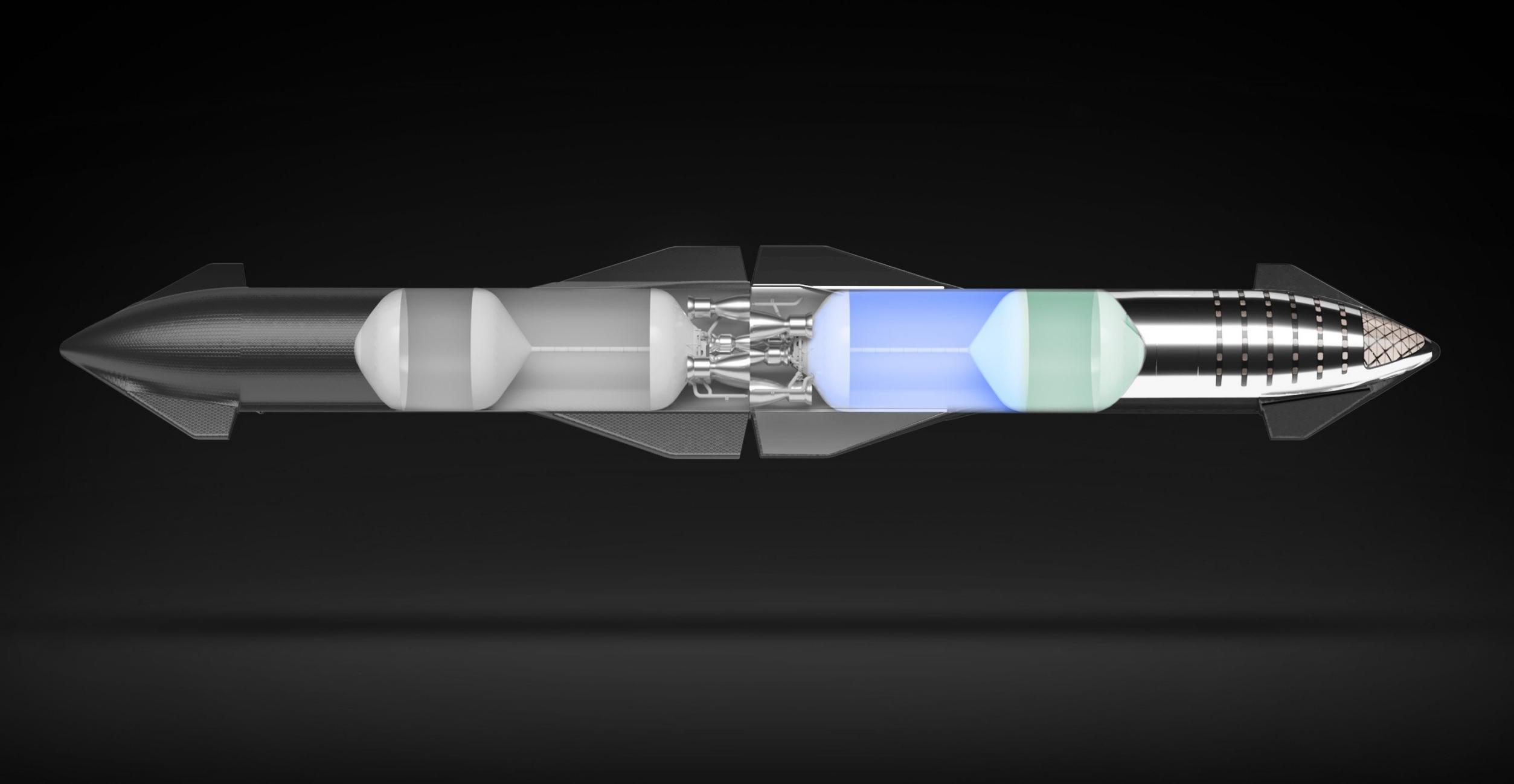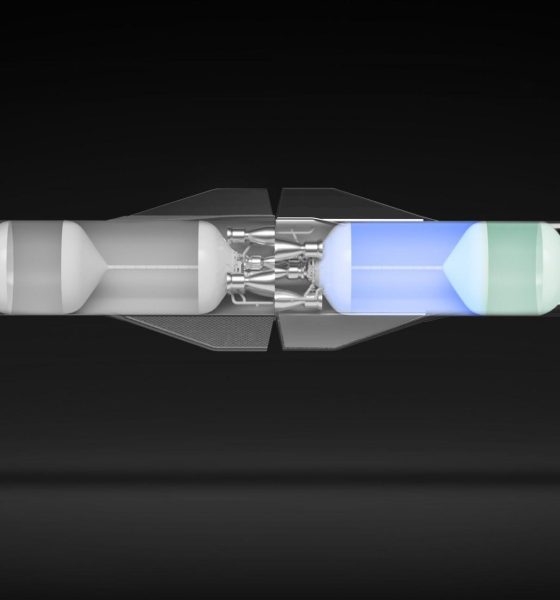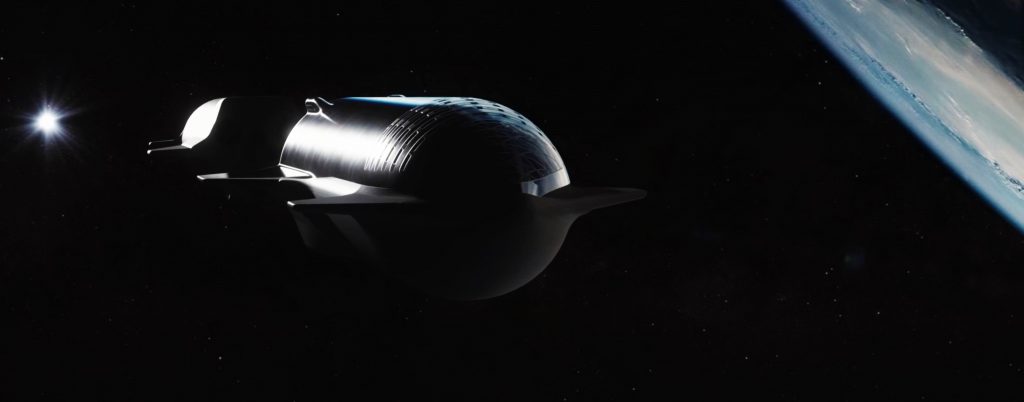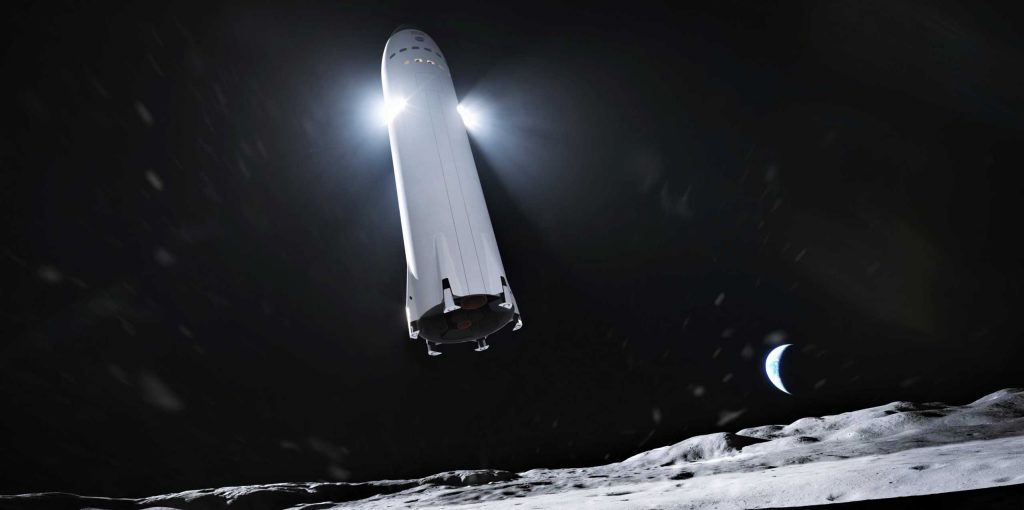

News
SpaceX’s Starship wins $53M from NASA for full-scale orbital refueling test
SpaceX’s Starship program has won $53 million from NASA to perform a full-scale test of orbital propellant transfer, taking the company and space agency’s relationship on the crucial technology to the next level.
NASA revealed the results of its fifth round of “Tipping Point” solicitations on October 14th, announcing awards of more than $370 million total to 14 separate companies. This year’s investments focused on three main categories: “cryogenic fluid management, lunar surface [operations], and closed-loop [i.e. autonomous] descent and landing capability demonstrations.”
In a fairly predictable outcome, the bulk (~$176 million) went to Lockheed Martin and the United Launch Alliance (ULA), while the other half (~$189 million) was split among the twelve remaining companies. In an upset, however, SpaceX was awarded a substantial contract for a crucial aspect of Starship development.

Today’s Tipping Point contract is technically the second time NASA has awarded SpaceX funding for propellant transfer development. In October 2019, almost exactly one year ago, SpaceX won $3 million “to develop and test…cryogenic fluid coupler [prototypes] for large-scale in-space propellant transfer,” marking NASA’s first direct investment in Starship. It seems that NASA was thoroughly satisfied with the results of that icebreaker test – enough to fund a full demonstration of Starship propellant transfer to the tune of $53.2 million.
As Ars Technica’s Eric Berger notes, NASA investing eight figures in a SpaceX Starship propellant transfer demonstration – let alone some $250 million overall in four separate companies – comes as a major surprise. In doing so, NASA is effectively testing the tolerance of political stakeholders in programs like Orion and SLS – programs that exist more to preserve jobs and prop up Congressional stakeholders. If a magnitude(s)-cheaper and more capable solution like distributed launch and orbital refueling were demonstrated under NASA’s own purview, it might become a lot harder to defend heritage programs that have been hemorrhaging ~20% of the space agency’s annual budget for almost a decade.
NASA says that this round of Tipping Point contracts could last up to five years. Aside from a $41.6 million contract with Intuitive Machines to develop a Moon hopper spacecraft capable of propulsively hopping around the lunar surface, the most interesting awards are focused on “cryogenic fluid management.” Eta Space received $27 million for a “small-scale flight demonstration of a complete cryogenic oxygen fluid management system to be integrated with Rocket Lab’s Photon spacecraft bus and launched on an Electron rocket.
Lockheed Martin won $89.7 million for an “in-space demonstration mission using liquid hydrogen…to test more than a dozen cryogenic fluid management technologies.” ULA, of which Lockheed Martin is a member, was awarded $86.2 million to test “precise tank pressure control, tank-to-tank transfer, and multi-week propellant storage” with a Vulcan Centaur upper stage.

Finally, SpaceX won $53.2 million for a “large-scale flight demonstration to transfer 10 metric tons of [liquid oxygen] between tanks on a Starship vehicle.” Notably, this seems to imply that NASA is effectively funding a single-ship orbital flight test in which a Starship prototype will (most likely) attempt to transfer liquid oxygen between its main LOx tank and a smaller ‘header’ tank.
Coming on the heels of an April 2020 contract that awarded SpaceX $135 million to develop a crewed Starship design optimized for Moon landings, NASA is beginning to put some serious money where its mouth is to develop a wide range of innovative solutions that may enable sustainable human space exploration.
Check out Teslarati’s Marketplace! We offer Tesla accessories, including for the Tesla Cybertruck and Tesla Model 3.

Elon Musk
Elon Musk’s X will start using a Tesla-like software update strategy
The initiative seems designed to accelerate updates to the social media platform, while maintaining maximum transparency.

Elon Musk’s social media platform X will adopt a Tesla-esque approach to software updates for its algorithm.
The initiative seems designed to accelerate updates to the social media platform, while maintaining maximum transparency.
X’s updates to its updates
As per Musk in a post on X, the social media company will be making a new algorithm to determine what organic and advertising posts are recommended to users. These updates would then be repeated every four weeks.
“We will make the new 𝕏 algorithm, including all code used to determine what organic and advertising posts are recommended to users, open source in 7 days. This will be repeated every 4 weeks, with comprehensive developer notes, to help you understand what changed,” Musk wrote in his post.
The initiative somewhat mirrors Tesla’s over-the-air update model, where vehicle software is regularly refined and pushed to users with detailed release notes. This should allow users to better understand the details of X’s every update and foster a healthy feedback loop for the social media platform.
xAI and X
X, formerly Twitter, has been acquired by Elon Musk’s artificial intelligence startup, xAI last year. Since then, xAI has seen a rapid rise in valuation. Following the company’s the company’s upsized $20 billion Series E funding round, estimates now suggest that xAI is worth tens about $230 to $235 billion. That’s several times larger than Tesla when Elon Musk received his controversial 2018 CEO Performance Award.
As per xAI, the Series E funding round attracted a diverse group of investors, including Valor Equity Partners, Stepstone Group, Fidelity Management & Research Company, Qatar Investment Authority, MGX, and Baron Capital Group, among others. Strategic partners NVIDIA and Cisco Investments also continued support for building the world’s largest GPU clusters.
News
Tesla FSD Supervised wins MotorTrend’s Best Driver Assistance Award
The decision marks a notable reversal for the publication from prior years, with judges citing major real-world improvements that pushed Tesla’s latest FSD software ahead of every competing ADAS system.

Tesla’s Full Self-Driving (Supervised) system has been named the best driver-assistance technology on the market, earning top honors at the 2026 MotorTrend Best Tech Awards.
The decision marks a notable reversal for the publication from prior years, with judges citing major real-world improvements that pushed Tesla’s latest FSD software ahead of every competing ADAS system. And it wasn’t even close.
MotorTrend reverses course
MotorTrend awarded Tesla FSD (Supervised) its 2026 Best Tech Driver Assistance title after extensive testing of the latest v14 software. The publication acknowledged that it had previously criticized earlier versions of FSD for erratic behavior and near-miss incidents, ultimately favoring rivals such as GM’s Super Cruise in earlier evaluations.
According to MotorTrend, the newest iteration of FSD resolved many of those shortcomings. Testers said v14 showed far smoother behavior in complex urban scenarios, including unprotected left turns, traffic circles, emergency vehicles, and dense city streets. While the system still requires constant driver supervision, judges concluded that no other advanced driver-assistance system currently matches its breadth of capability.
Unlike rival systems that rely on combinations of cameras, radar, lidar, and mapped highways, Tesla’s FSD operates using a camera-only approach and is capable of driving on city streets, rural roads, and freeways. MotorTrend stated that pure utility, the ability to handle nearly all road types, ultimately separated FSD from competitors like Ford BlueCruise, GM Super Cruise, and BMW’s Highway Assistant.
High cost and high capability
MotorTrend also addressed FSD’s pricing, which remains significantly higher than rival systems. Tesla currently charges $8,000 for a one-time purchase or $99 per month for a subscription, compared with far lower upfront and subscription costs from other automakers. The publication noted that the premium is justified given FSD’s unmatched scope and continuous software evolution.
Safety remained a central focus of the evaluation. While testers reported collision-free operation over thousands of miles, they noted ongoing concerns around FSD’s configurable driving modes, including options that allow aggressive driving and speeds beyond posted limits. MotorTrend emphasized that, like all Level 2 systems, FSD still depends on a fully attentive human driver at all times.
Despite those caveats, the publication concluded that Tesla’s rapid software progress fundamentally reshaped the competitive landscape. For drivers seeking the most capable hands-on driver-assistance system available today, MotorTrend concluded Tesla FSD (Supervised) now stands alone at the top.
News
Elon Musk’s Grokipedia surges to 5.6M articles, almost 79% of English Wikipedia
The explosive growth marks a major milestone for the AI-powered online encyclopedia, which was launched by Elon Musk’s xAI just months ago.

Elon Musk’s Grokipedia has grown to an impressive 5,615,201 articles as of today, closing in on 79% of the English Wikipedia’s current total of 7,119,376 articles.
The explosive growth marks a major milestone for the AI-powered online encyclopedia, which was launched by Elon Musk’s xAI just months ago. Needless to say, it would only be a matter of time before Grokipedia exceeds English Wikipedia in sheer volume.
Grokipedia’s rapid growth
xAI’s vision for Grokipedia emphasizes neutrality, while Grok’s reasoning capabilities allow for fast drafting and fact-checking. When Elon Musk announced the initiative in late September 2025, he noted that Grokipedia would be an improvement to Wikipedia because it would be designed to avoid bias.
At the time, Musk noted that Grokipedia “is a necessary step towards the xAI goal of understanding the Universe.”
Grokipedia was launched in late October, and while xAI was careful to list it only as Version 0.1 at the time, the online encyclopedia immediately earned praise. Wikipedia co-founder Larry Sanger highlighted the project’s innovative approach, noting how it leverages AI to fill knowledge gaps and enable rapid updates. Netizens also observed how Grokipedia tends to present articles in a more objective manner compared to Wikipedia, which is edited by humans.
Elon Musk’s ambitious plans
With 5,615,201 total articles, Grokipedia has now grown to almost 79% of English Wikipedia’s article base. This is incredibly quick, though Grokipedia remains text-only for now. xAI, for its part, has now updated the online encyclopedia’s iteration to v0.2.
Elon Musk has shared bold ideas for Grokipedia, including sending a record of the entire knowledge base to space as part of xAI’s mission to preserve and expand human understanding. At some point, Musk stated that Grokipedia will be renamed to Encyclopedia Galactica, and it will be sent to the cosmos.
“When Grokipedia is good enough (long way to go), we will change the name to Encyclopedia Galactica. It will be an open source distillation of all knowledge, including audio, images and video. Join xAI to help build the sci-fi version of the Library of Alexandria!” Musk wrote, adding in a later post that “Copies will be etched in stone and sent to the Moon, Mars and beyond. This time, it will not be lost.”








